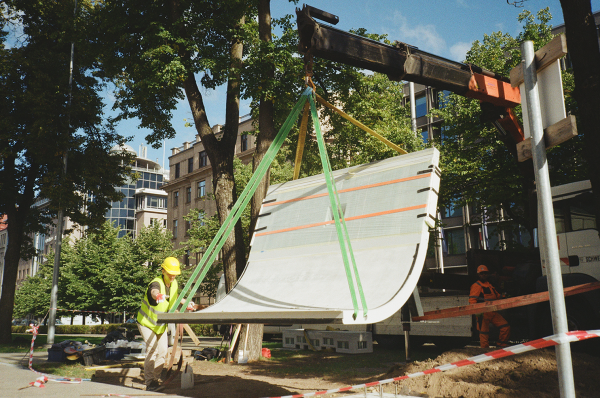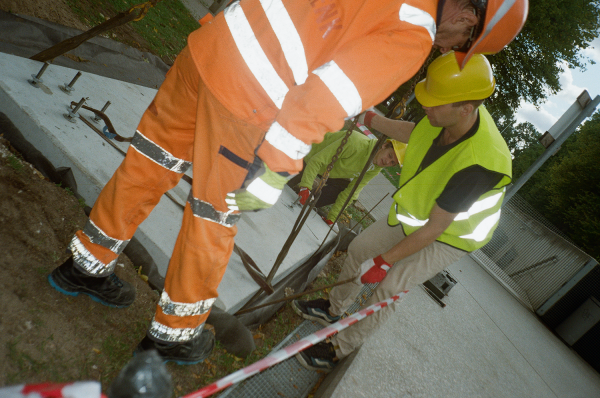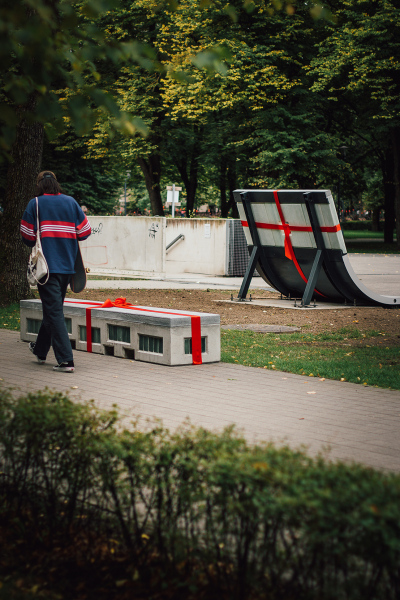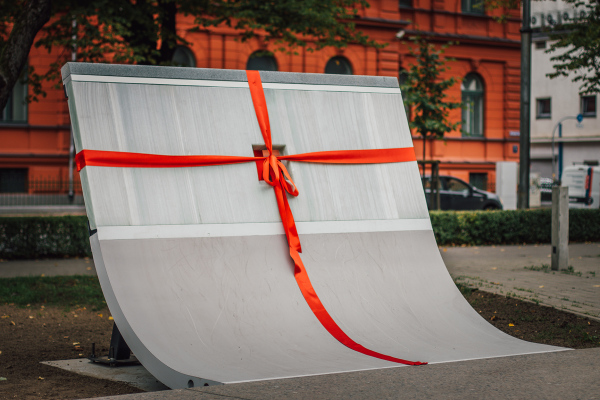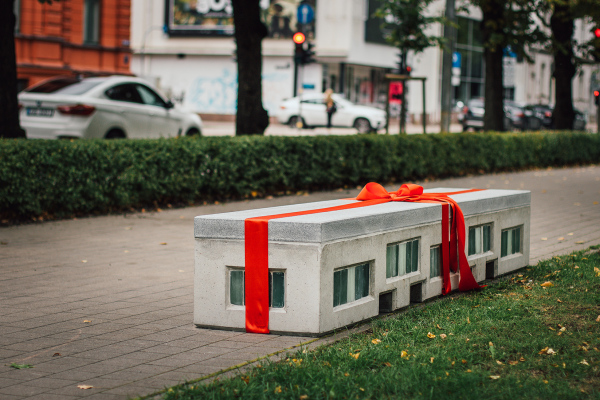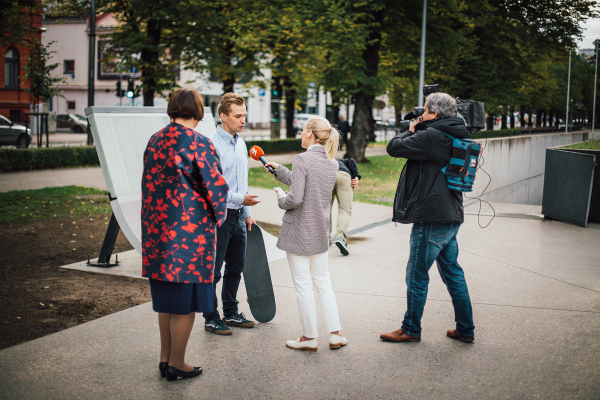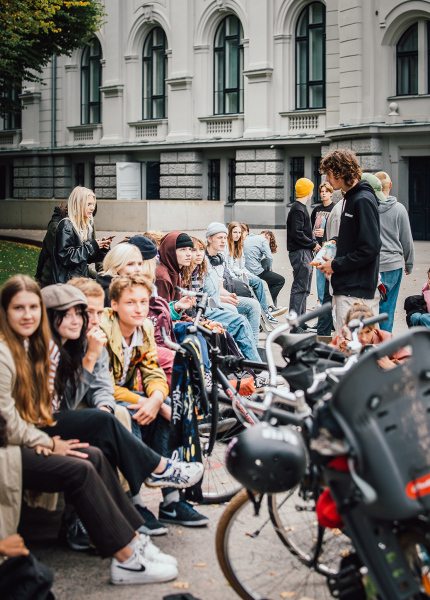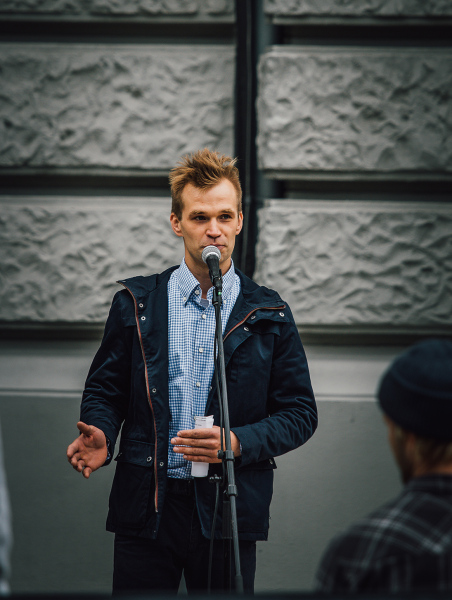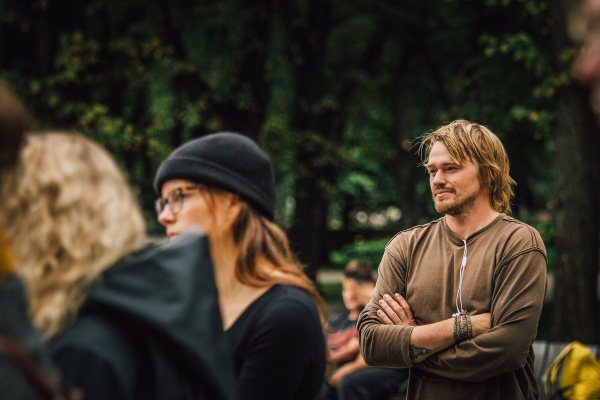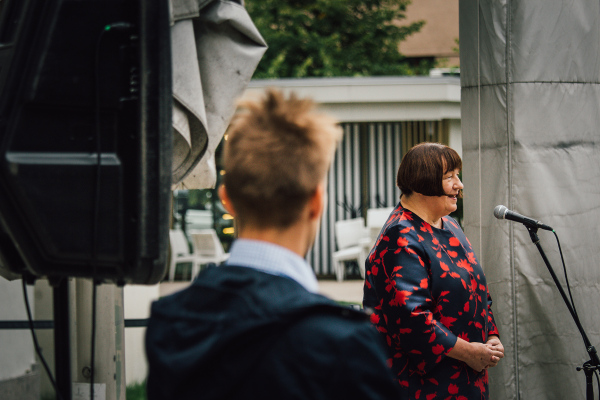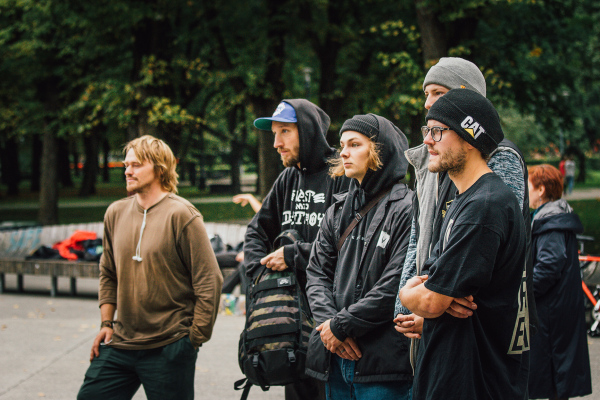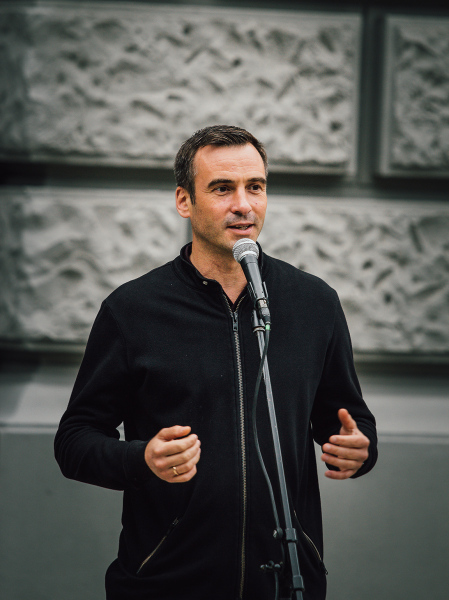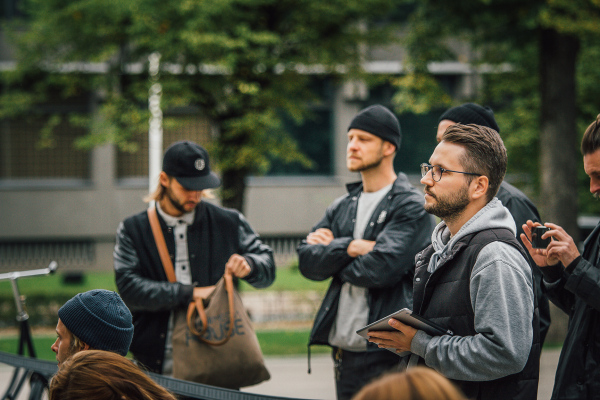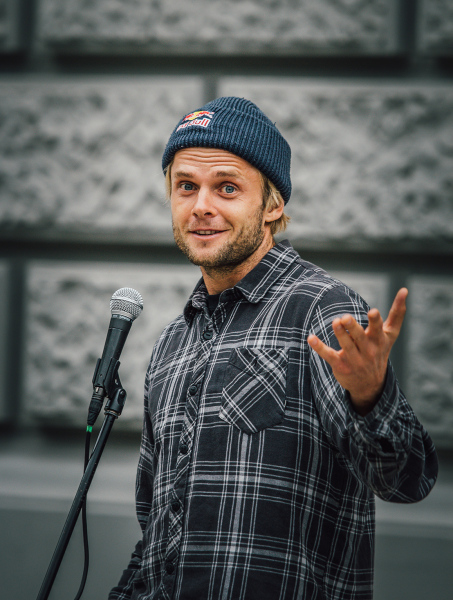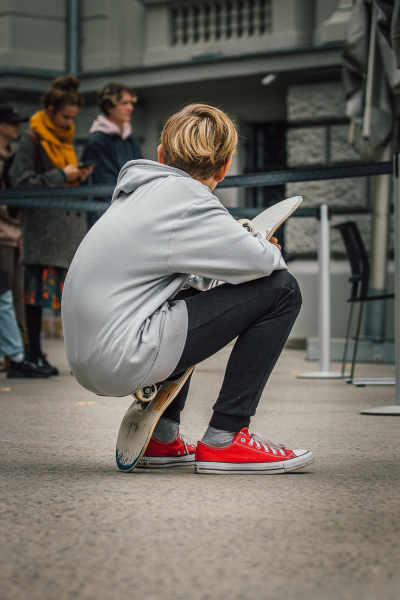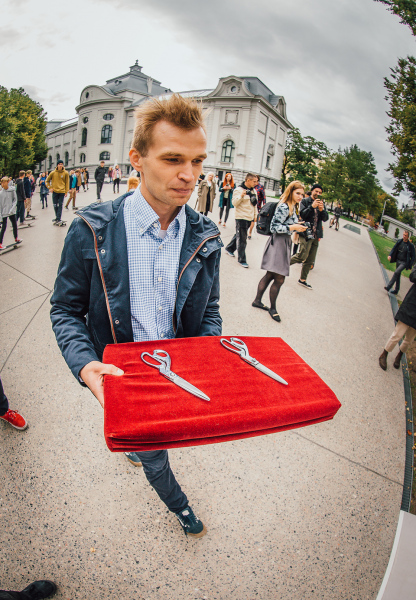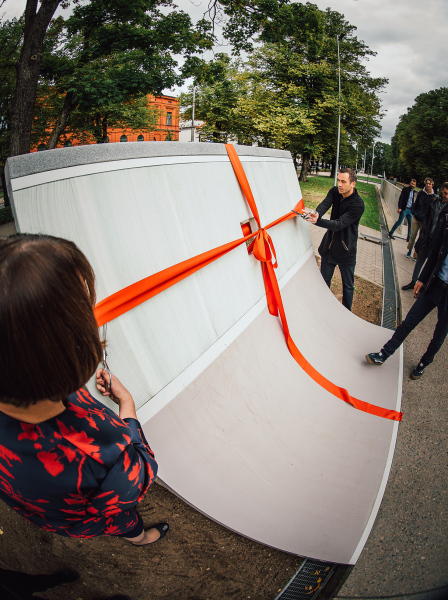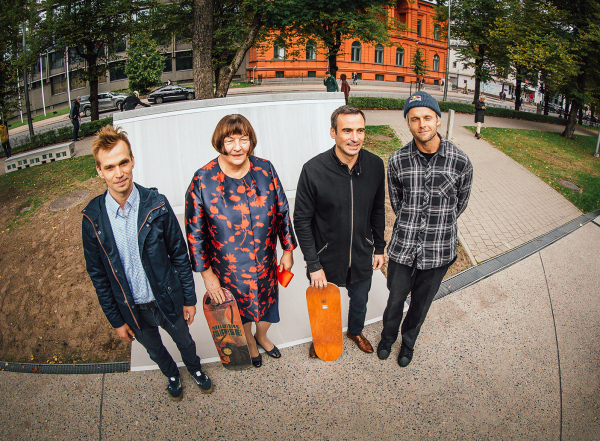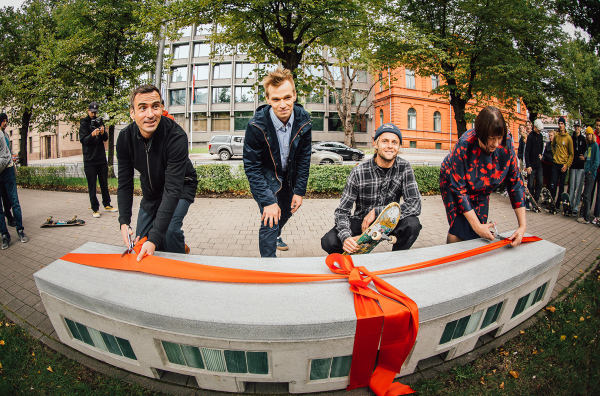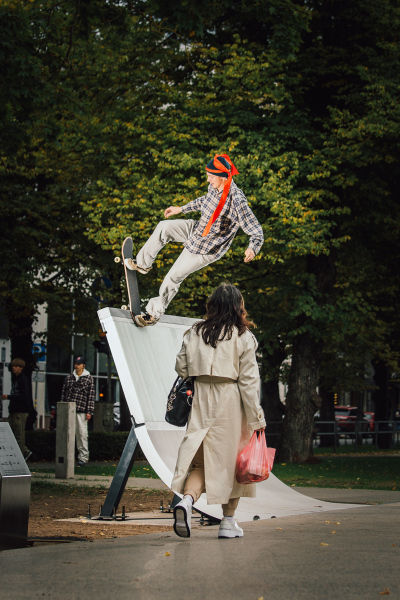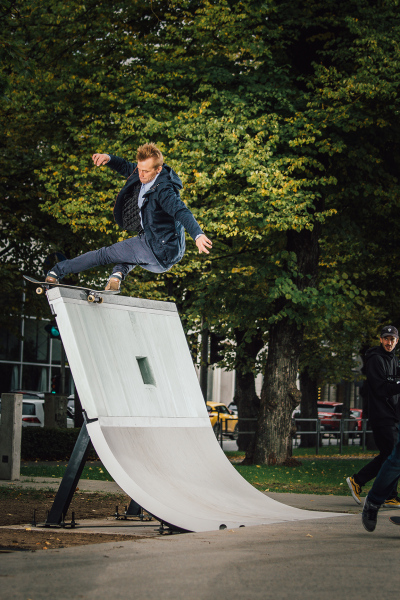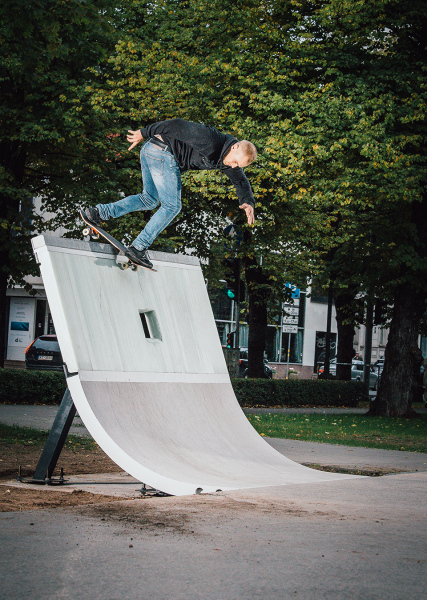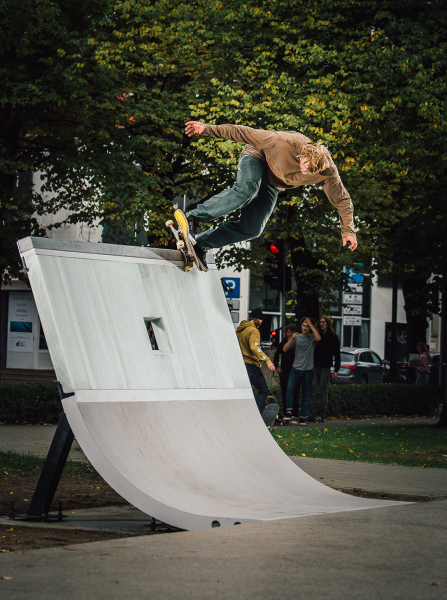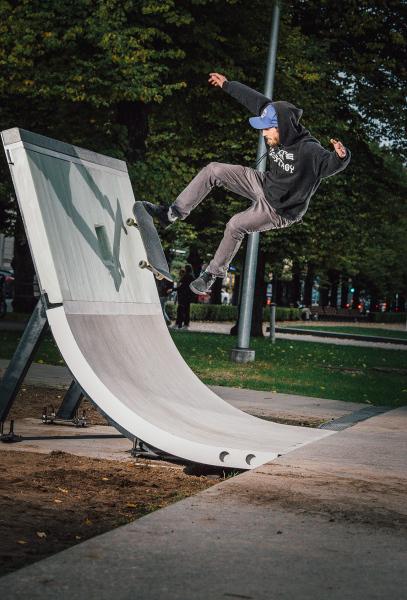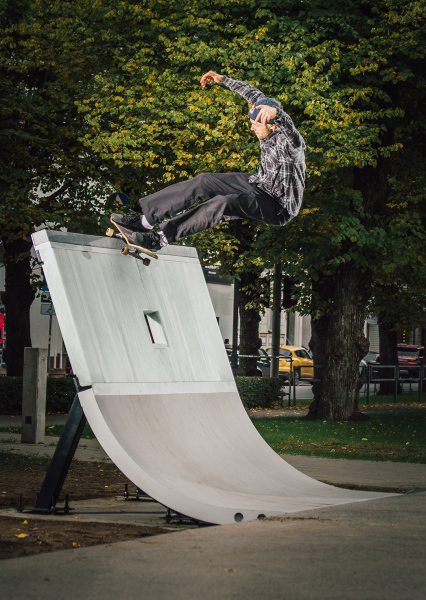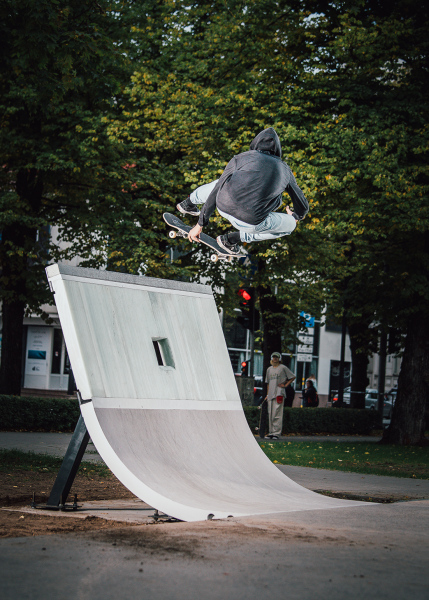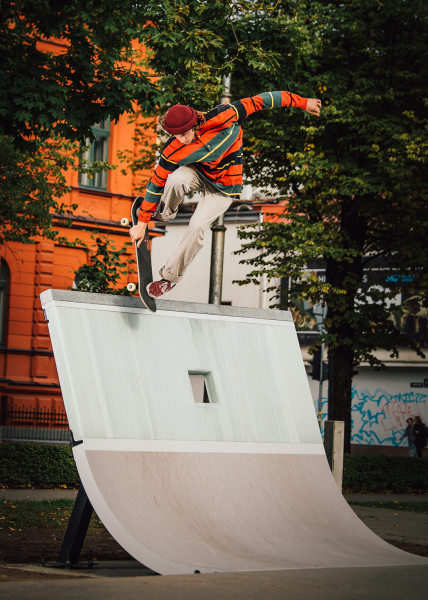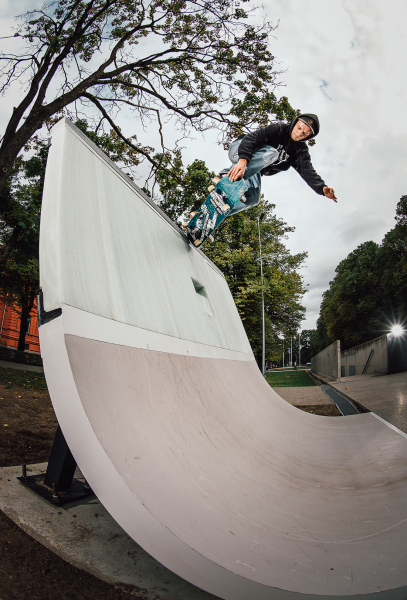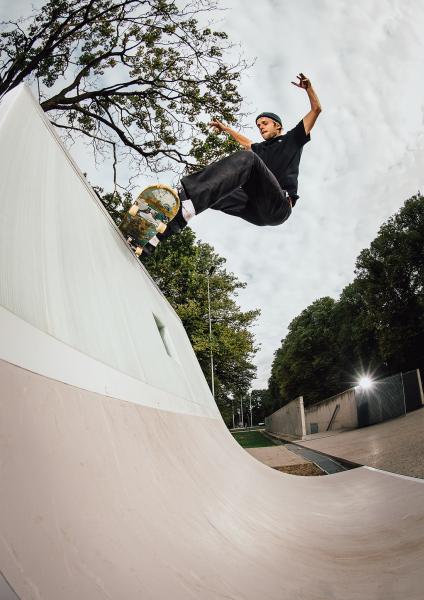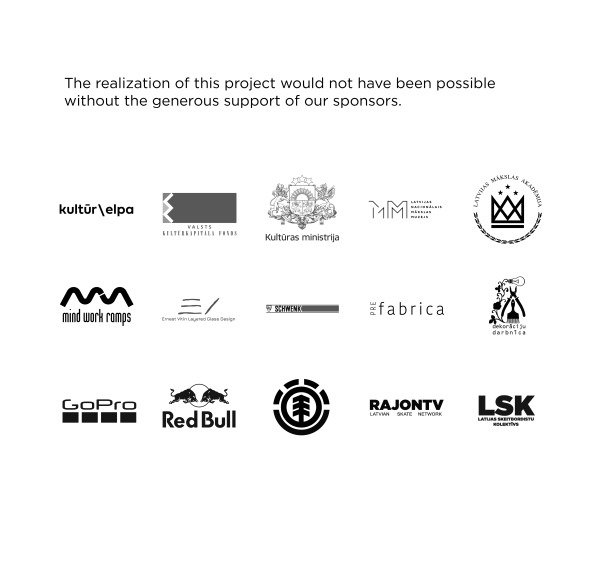The J. Rozenthal plaza, located adjacent to the Latvian National Museum of Art, was the scene of a commotion when a skateboarder ollied into the roof of museum's underground gallery and broke one of the protective layers of its skylights. These windows, designed to be stepped on and occasionally used with a skateboard, were damaged as a result of the failed maneuver. This incident, which garnered widespread media attention including coverage from the "yellow press," resulted in a negative portrayal of skateboarders. It was the goal of this project to change this perception and address the misunderstanding. To that end, skateboard-resistant glass objects were presented as a potential solution to prevent similar incidents and improve relations between skateboarders and local residents. Professional skateboarder and friend Madars Apse supported and encouraged the development of this idea, suggesting a dialogue with the Latvian National Art Museum. The museum's director, Māra Lāce, was open to the proposal. The museum's square, with its large open area and suitable surface, is a rare find in Riga's urban environment and therefore worthy of addressing the misunderstanding. However, bringing the project to fruition proved more complex than anticipated, requiring coordination with multiple government agencies and extending the timeline of the project by three times its original duration of one year. Despite these challenges, it is a special opportunity to contribute to the development of Riga's urban landscape and offer this gift to the city.
The curved shape of the enviourmental, is a technical marvel. Constructed from a metal frame and concrete radius, it features a 92 cm high, 250 cm wide, and 10 cm thick recycled layered glass block, as well as a 8 cm thick granite coping. The layered glass, consisting of multiple 6 mm thick sheets fused together in a glass kiln, presents a particular challenge. The process of creating approximately 1 m2 of this glass takes approximately three weeks, during which time the temperature must be carefully controlled, resulting in a substantial electricity bill. The accompanying bench is slightly less complex, comprising a concrete base with glass windows and a 8 cm thick, 54 cm wide, and 300 cm long granite top, as well as forklift paths for ease of transportation. Both the granites used are Kuru Grey from Finland, a rare find in Latvian grounds and often reserved for use on old, precious monuments or found on modern architecture in cheaper, lower quality form. In order to ensure that the street spot would be a pleasure to skate on and a visually appealing addition to the freshly renovated museum, the priority was the use of high-quality materials.

